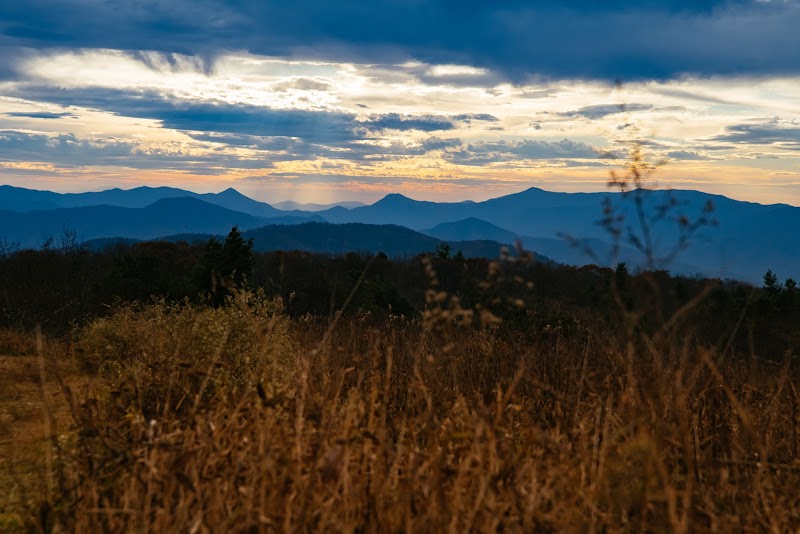
Chasing Cascades: Best Scenic Multi-Day Backpacking Routes in Cherokee National Forest for Waterfall Lovers
Explore the top multi-day backpacking routes in Cherokee National Forest designed for waterfall enthusiasts. Navigate rugged trails to experience breathtaking cascades framed by dense forests and sweeping mountain views, ideal for adventurers seeking both challenge and natural beauty.
Stay Hydrated and Treat Natural Water
Streams provide cool, tempting water, but always purify before drinking to avoid waterborne illnesses like giardia.
Wear Footwear with Grip
Expect wet, rocky terrain near waterfalls; boots with solid traction reduce slips on slick surfaces and uneven paths.
Start Early to Maximize Daylight
Begin hikes at dawn to allow time for waterfall stops and potential unexpected obstacles before dusk.
Pack Layered Clothing & Rain Gear
Mountain weather changes abruptly; breathable layers and waterproof outerwear keep you comfortable all day.
Chasing Cascades: Best Scenic Multi-Day Backpacking Routes in Cherokee National Forest for Waterfall Lovers
Cherokee National Forest stretches over 600,000 acres across eastern Tennessee, boasting unyielding ridges and deep hollows carved by rivers that command attention at every turn. For waterfall lovers, this forest offers a fierce playground where misty drops dare you to draw closer and rushing currents push you forward along rugged trails.
If you’re ready for a multi-day backpacking experience that balances adventure with practicality, these routes deliver remarkable waterfalls framed by old-growth forest, rocky creek crossings, and panoramic overlooks.
1. Joyce Kilmer Eagle Creek Loop (Approx. 17 miles, 2,500 ft elevation gain) Start at the Eagle Creek Campground, where thick hardwoods lean over trails that guide you to a thundering wall of water at Eagle Creek Falls. The loop combines shaded valleys and open ridges, rewarding hikers with views of cascading streams that call for respectful reverence. Terrain ranges from packed dirt to rocky sections requiring sturdy footwear—expect wet crossings. Wildflowers and songbirds accompany you in spring.
2. Big Creek Trail to Blue Hole Falls (Approx. 12 miles roundtrip, 1,200 ft elevation gain) This moderately challenging route follows the Big Creek’s insistence as it carves through steep slopes. The trail’s highlight is Blue Hole Falls, where water plunges into a pristine pool instantly tempting a cool dip. The path includes creek-side strolls, occasional boulder hops, and a steep ascent near viewpoints overlooking the lush canyon below. Plan for around 6-8 hours, camping available near trailheads.
3. Rocky Fork Loop Trail (Approx. 23 miles, 3,000 ft elevation gain) For those seeking a fuller immersion, the Rocky Fork Loop encircles varied terrain from dense conifers to open ridges that flare out with views of distant peaks. Multiple waterfalls border the route, including the subtle yet persistent Rocky Fork Falls. This trail demands endurance and confidence in navigation, with rugged footing and sections where rain may turn rocks slick. Campsites sprawl near water sources but pack purification gear.
Practical Tips:
- Hydration is non-negotiable. Streams run cold but treat water directly to avoid giardia.
- Durable hiking boots with good traction help manage slippery rock slabs and creek crossings.
- Starting early maximizes daylight; expect cooler temperatures near waterfalls even in summer.
- Weather shifts quickly in the mountains—carry layers and rain gear.
These routes reveal how Cherokee’s waterfalls are forces of nature fiercely themselves, each cascade a reminder of wilderness shaped on its terms—not yours. Prepare well, move steadily, and let the water’s voice pull you deeper into the forest’s rugged embrace.
Nearby Trips
All Adventures
Boat Charters
Water Activities
Adventures near Johnson City, Tennessee
Discover the unique and memorable adventures that make Johnson City, Tennessee special.
Frequently Asked Questions
Are permits required for overnight camping on these routes?
Permits are generally not required for dispersed camping in Cherokee National Forest, but camping must follow Leave No Trace principles and be set up at least 200 feet from water sources and trails.
What wildlife might I encounter near the waterfalls?
Expect to see white-tailed deer, various songbirds, and occasional black bear activity. Snakes, including non-venomous and copperheads, may be present near water and rocky areas.
What is the best way to navigate the Rocky Fork Loop?
Carry a detailed topographic map or GPS device; signage can be sparse, and the terrain is rugged. Check trail conditions at local ranger stations before heading out.
Are there any historically significant sites on these trails?
Yes, sections near Eagle Creek contain remnants of early 20th-century logging operations and old homestead sites, offering a glimpse into the region’s cultural past.
What environmental concerns should I be aware of?
Minimize impact by staying on established trails to protect fragile mosses and streambanks. Avoid washing soap or chemicals near water sources and pack out all trash.
Where can I find quiet spots away from crowds?
The upper sections of the Rocky Fork Loop and parts of Big Creek Trail are less frequented, especially on weekdays, providing solitude and uninterrupted nature sounds.
Recommended Gear
Water Filter or Purification Tablets
Necessary for filtering creek water to stay safely hydrated throughout the trip.
Sturdy Hiking Boots with Traction
Provides support and reduces slipping on wet rocks near waterfalls.
Lightweight Rain Jacket
Protects against sudden rain showers common in Cherokee’s mountain weather.
Headlamp with Extra Batteries
Critical for early starts, late finishes, and emergencies after dark.
Local Insights
Hidden Gems
- "Rocky Fork’s remote overlooks with seldom-seen views of the Tennessee Valley"
- "Small cascades feeding into Big Creek often missed on main trails"
Wildlife
- "Eastern Box Turtles crossing moist forest floors"
- "Peregrine falcons nesting near some cliff faces"
History
"The forest served as a logging and settling area in the early 1900s; traces of old rail lines and logging camps remain along some trails."
